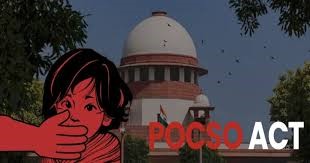
In a significant move to safeguard the rights of children and enhance legal frameworks against exploitation, the Supreme Court of India has made pivotal updates to the laws surrounding child pornography. This article delves into the recent developments and their implications for child protection, exploring how the highest court in the country has reinforced its stance against this heinous crime.
Understanding the Supreme Court’s Ruling
The Supreme Court’s recent ruling aims to close loopholes and ensure stringent measures against child pornography. With the rise of digital platforms, the availability and distribution of such illegal content have surged, necessitating a robust legal response. The court has underscored the need for comprehensive legislation that not only penalizes offenders but also prevents such crimes from occurring in the first place.
Key Changes to the Law
The updated child pornography laws introduced by the Supreme Court encompass several critical provisions:
- Stricter Penalties: The new amendments impose harsher penalties for those found guilty of producing, distributing, or possessing child pornography. Offenders may now face extended prison sentences and substantial fines, signaling a zero-tolerance approach to child exploitation.
- Enhanced Surveillance and Reporting Mechanisms: The Supreme Court has mandated improved reporting mechanisms for suspected cases of child pornography. Law enforcement agencies are now required to establish dedicated units focused on monitoring and addressing such crimes effectively.
- Protection for Victims: Victims of child pornography will receive better protection under the law. The amendments include provisions for the confidentiality of victims’ identities and support for their rehabilitation and reintegration into society.
- Collaboration with Tech Companies: Recognizing the role of technology in both facilitating and combating child pornography, the court has encouraged collaboration between law enforcement agencies and tech companies. This partnership aims to develop effective strategies for detecting and removing illegal content from online platforms.
The Impact of the Supreme Court’s Decision
The Supreme Court’s update to child pornography laws marks a watershed moment in India’s fight against child exploitation. By strengthening the legal framework, the court aims to deter potential offenders and protect vulnerable children from harm. This decision not only aligns with international standards but also reflects a growing societal recognition of the importance of child safety.
A Call for Public Awareness
While legal updates are crucial, public awareness and education are equally important in the fight against child pornography. Communities must be informed about the signs of exploitation and the available resources for reporting suspicious activities. The Supreme Court’s ruling serves as a clarion call for society to unite against child pornography and support victims in their journey toward healing.
The Role of Law Enforcement Agencies
Law enforcement agencies play a critical role in implementing the updated laws. With increased resources and training, these agencies can effectively investigate and prosecute cases of child pornography. The Supreme Court’s decision emphasizes the need for a collaborative approach, where law enforcement, social services, and community organizations work together to create a safer environment for children.
Conclusion: A Step Towards a Safer Future
The Supreme Court’s updates to child pornography laws represent a significant step forward in protecting the most vulnerable members of society—our children. By imposing stricter penalties, enhancing victim protection, and fostering collaboration with technology companies, the court has laid the groundwork for a more secure future.
As we move forward, it is imperative that society remains vigilant and proactive in combating child pornography. Together, we can create a safer world where children can thrive free from fear and exploitation.